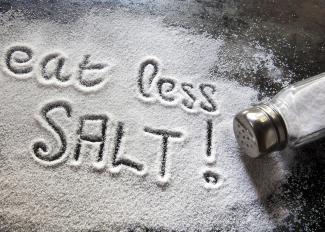
Just as too much salt leads to health problems, so does too little. How much is just right? Hear it from Dr Gita Mathai, paediatrician and family practitioner.
Salt was a precious commodity in historical times. The word “salary” is derived from “salt” and Roman soldiers were paid partly in salt. Valuable employees were described as “the salt of the earth” and dispensable ones as “salt that had lost its flavour.”
Somewhere between the Roman era and the 21st century, salt fell into disrepute. It is considered a major contributor to lifestyle diseases like hypertension, strokes, heart attacks, and suspected to aggravate liver and kidney failure.
Interest in the deleterious health effects of salt was precipitated by the discovery of tribes in various remote parts of the world who were inland hunters. Their dietary salt consumption was around 750mg a day, much lower than what is consumed today. They were healthy and had none of the lifestyle diseases seen in the modern world. But of course, they also did not eat highly processed foods with fructose, trans-fat, preservatives, colours and chemicals.
Why do we need salt
Salt comprises 0.15% of our total body weight. It is found in body cells, blood, lymphatic fluid, extracellular and amniotic fluid. Salt contains equal quantities of sodium and chlorine. The active (and potentially harmful) ingredient is the sodium but the two words – salt and sodium - are often interchanged.
Fluid, minerals and nutrients in the body are in a constant state of flux, regulated by osmotic pressure and ion exchange in intracellular and extracellular fluid. Sodium is essential for this process. It helps regulate nutrition, maintains blood pressure, keeps the brain functioning and muscles moving.
How much do we need
Safe, acceptable levels of salt intake are 2.3g a day if you are under 50 years and 1.5g if you are older. One level teaspoon of salt is 5g. This means that a four-member family can use 10g or two teaspoons of salt for a day’s cooking. Any salt in processed food, sauces, butter, bread, pickles and chutneys has to be deducted from this.
How the body handles salt
The body can efficiently regulate its own salt content. The kidney immediately excretes any excess salt consumed. If the body is deficient, salt is retained. To maintain an ideal balance, the kidneys have to be functioning efficiently. Also, the person should not have heart disease, liver failure or hormonal imbalances.
Age diminishes the efficiency of this self-regulatory mechanism. Some women can be “salt sensitive” due to an imbalance of hormones estrogen and progesterone. This causes them to retain fluid and “bloat” particularly in the premenstrual phase and in pregnancy.
Normal sodium levels in the body are 135-145 milliEquivalents/liter (mEq/L). If the sodium level rises beyond this range (hypernatraemia), due to net water loss, lethargy and irritability can set in. Sodium levels can rise to dangerous levels if we lose just water from the body as sweat or urine while not excreting a proportionate amount of sodium. Levels above 155 mEq/L are a medical emergency and can be fatal.
Hyponatraemia or low level of sodium in the body (levels below 135 mEq/L) can occur if too much plain water is drunk during endurance sports, as a result of diarrhoea and vomiting, regular use of diuretics, antidepressants or pain medication or if there are heart, kidney or liver problems. It causes headache, irritability, muscle weakness and cramps.
Types of salt
Natural salt is obtained from the sea. It contains minute quantities of other trace elements and minerals. Purified salt is made in factories and contains pure crystalline sodium chloride with or without added iodine.
The kind of salt you buy depends on your preference. Some prefer “natural” products, others require iodized salt. The government insists on all salt being iodized. Factory made salt is cheaper and more easily available than natural salt.
Salt substitutes are popular and used to reduce the total salt intake while at the same time retaining the flavour of food. These substitutes contain potassium chloride. In the body, potassium and sodium are mutually antagonistic. An excess of potassium can cause muscles to become weak and flaccid, produce changes in the electrical conduction of the heart and slow down reaction time in brain and muscle.
Salt should be used wisely, in consultation with your physician if you have a medical condition. It is possible to have “too much” or “too little” of a good thing.






